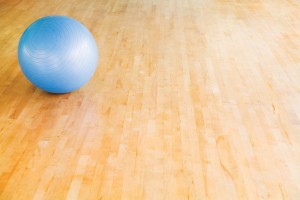 Cleaning can be a costly expense for gym owners and is often one of the first areas to come under scrutiny in tough economic times. However, reducing the cleaning budget could have serious repercussions down the road, especially if the health and appearance of the facility begin to suffer, since these are a top priority for many members when selecting a gym.
Cleaning can be a costly expense for gym owners and is often one of the first areas to come under scrutiny in tough economic times. However, reducing the cleaning budget could have serious repercussions down the road, especially if the health and appearance of the facility begin to suffer, since these are a top priority for many members when selecting a gym.
One possible cost-cutting area club owners should consider is floor care. In most gyms, proper mopping is a cleaning task that must be performed on a regular basis – sometimes multiple times per day in a busy facility – and according to a 2004 report by Green Seal®, a leading green certification organization, more than one billion dollars are spent annually in the United States on floor care products, such as strippers, sealers and cleaners used for deep cleaning, and finishes used for polishing. This figure does not include the cost of labor, which can account for a large portion of floor care expenses.
There are ways to reduce scrubbing, stripping, and refinishing cycles that are both cost-efficient and eco-friendly. Since many floor care chemicals have been identified as toxic, reducing their use is considered a green initiative, which is also something your members can be proud of!
Soil Prevention Strategies
The first step in reducing floor care costs is finding ways to decrease the amount of soil that is walked into facilities in the first place. One of the best soil prevention strategies is to install matting, which is designed to collect dirt and moisture from shoe bottoms.
“What is more effective than conventional matting is a high-performance matting system, which usually cannot be rented but must be purchased from a distributor,” says Christopher Tricozzi, vice president of sales and marketing for Crown Mats and Matting. High-performance mats are designed to scrape off soil and moisture from shoe bottoms and, most important, trap them in the matting system, preventing contaminants from being tracked into the facility. “Some high-performance mats accomplish this through a bi-level construction,” says Tricozzi. “With such mats, as foot traffic passes over the mat, soil and moisture fall below the upper surface of the matting, where it is stored.”
The length of the mat is vital; Tricozzi suggests that gym managers adhere to the “Rule of 15,” where three matting types, each five feet in length, work together as a system. These include:
• Scraper Mats: Scraper matting is placed outside of a facility to scrape dirt, debris, and snow from shoe bottoms.
• Wiper/Scraper Mats: These mats are placed directly inside the facility’s doors and remove soils and moisture not trapped by the scraper mats.
• Wiper Mats: The final line of defense. These mats remove almost all remaining contaminants, preventing them from entering the facility.
Reading Between the Lines
Advancements in floor care equipment have also helped reduce floor care maintenance costs. “For instance, some automatic scrubbers have solenoids to control water flow,” says Michael Schaffer, president of Tornado Industries, manufacturer of professional cleaning tools and equipment. “This avoids the old problem of water accidentally flowing if an operator leaves the valve open.”
According to Schaffer, another noteworthy advancement in floor care equipment is battery-powered machines. These machines deliver about two hours of run time, cleaning about 15,000 square feet, before recharging is needed. Since the machines do not have to be continually plugged in and unplugged from wall outlets, worker productivity increases considerably, and the facility’s green image is enhanced because of the energy savings.
Schaffer also suggests that club owners and operators look into an entirely different kind of floor care technology called cylindrical brush technology. Unlike conventional rotary machines, “cylindrical brush floor machines use brushes instead of pads to clean, strip and scrub floors,” he says. “The brushes can reach deep into all types of floor surfaces and remove soiling with little or no added time or labor costs.”
The Final Tip
Along with choosing high-performance matting and more advanced floor care machines, another way gym managers can reduce floor maintenance costs is by spending more on floor care chemicals and finishes. “This is one area where managers should not skimp,” says Schaffer. “Managers should select higher-quality floor care products, which usually last longer, are easier to apply and enhance safety. Spending a little more [now] can save a lot later.”
______________________________________
Robert Kravitz is a former building service contractor, the author of two books on professional cleaning and a frequent writer for the industry. He can be reached at info@alturasolutions.com.








